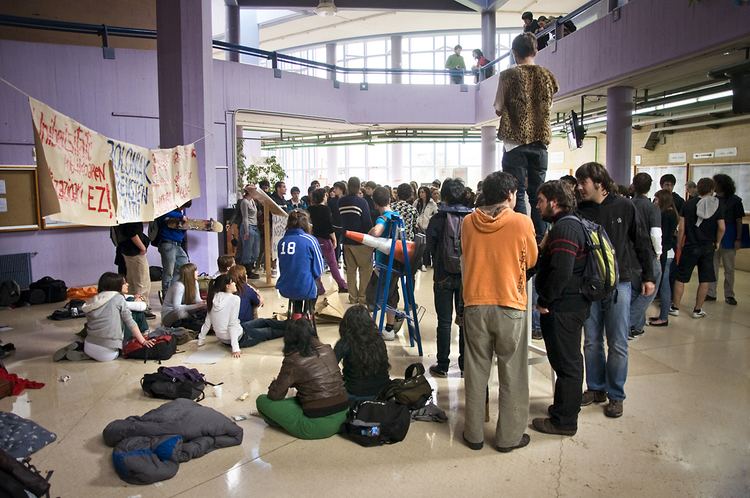 | ||
As an act of protest, occupation is a strategy often used by social movements and other forms of collective social action in order to take and hold public and symbolic spaces, buildings, critical infrastructure such as entrances to train stations, shopping centers, university buildings, squares, and parks. Opposed to a military occupation which attempts to subdue a conquered country, a protest occupation is a means to resist the status quo and advocate a change in public policy. Occupation attempts to use space as an instrument in order to achieve political and economic change, and to construct counter-spaces in which protesters express their desire to participate in the production and re-imagination of urban space. Often, this is connected to the right to the city, which is the right to inhabit and be in the city as well as to redefine the city in ways that challenge the demands of capitalist accumulation. That is to make public spaces more valuable to the citizens in contrast to favoring the interests of corporate and financial capital.
Contents
Unlike other forms of protest like demonstrations, marches and rallies, occupation is defined by an extended temporality and is usually located in specific places. In many cases local governments declare occupations illegal because protesters seek to control space over a prolonged time. Thus occupations are often in conflict with political authorities and forces of established order, especially the police. These confrontations in particular attract media attention.
Occupation, as a means of achieving change, emerged from worker struggles that sought everything from higher wages to the abolition of capitalism. Often called a sit-down strike, it is a form of civil disobedience in which an organized group of workers, usually employed at a factory or other centralized location, take possession of the workplace by "sitting down" at their stations, effectively preventing their employers from replacing them with strikebreakers or, in some cases, moving production to other locations.
The recovered factories in Argentina is an example of workplace occupations moving beyond addressing workplace grievances, to demanding a change in ownership of the means of production.
The Industrial Workers of the World were the first American union to use it, while the United Auto Workers staged successful sit-down strikes in the 1930s, most famously in the Flint Sit-Down Strike of 1936-1937. Sit-down strikes were declared illegal by the US supreme court, but are still used by unions such as the UMWA in the Pittston strike, and the workers at the Republic Windows and Doors factory in Chicago.
The Occupy Wall Street movement, inspired amongst others by the Arab Spring and the Indignados movement of Spain, started a global movement in which the occupation of public spaces is a key tactic. During these protests in 2011, the tactic of occupation was used in a new way as protesters wanted to remain indefinitely until they were heard, resisting police and government officials who wanted to evict them. In contrast to earlier protest encampments these occupations mobilized more people during a longer time period in more cities. This gained them worldwide attention.
